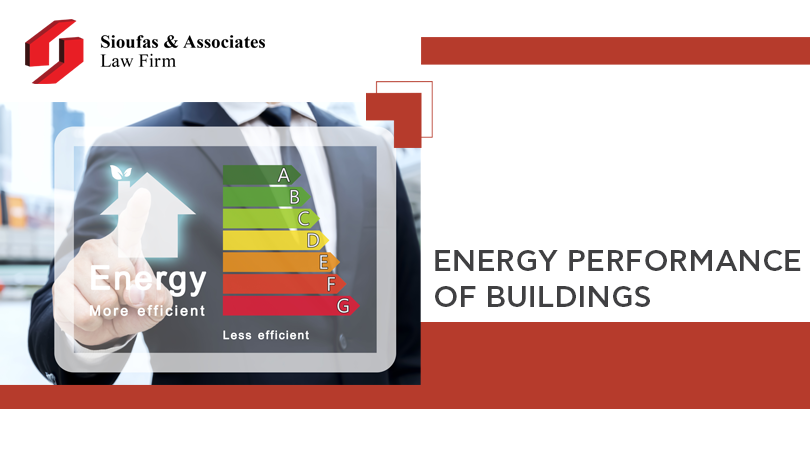Energy Performance of Buildings

Under the existing legislation, there is an obligation to assess the energy performance of buildings and in particular: in the context of the Community Directive 91/2002/EC “on the energy performance of buildings”, our country has been harmonized with this Community Directive through Law No. 3661/2008 “Measures for the reduction of Energy Consumption of Buildings and other provisions”, under which there was an obligation to issue a “Building Energy Performance Regulation” in which, among other things, the minimum technical specifications and energy efficiency requirements for new and radically renovated buildings, as well as the methodology for calculating the energy performance of buildings should be defined. The afore mentioned Directive was subsequently amended by Directive 31/2010/EC and our harmonization to it was achieved with the adoption of the new Law 4122/2013 “Energy Performance of Buildings – Harmonization with Directive 2010/31/EU of the European Parliament and of the Council and other provisions”, the provisions of which regarding the regulations of the Energy Performance Certificate (EPC) and the intervention programs in the building sector were amended by Law 4843/2021. In addition, the Joint Ministerial Decision of 12.07.2017 of the Ministers of Finance, Environment and Energy, under the number DEPEA/oik.178581, which establishes the framework of principles and defines the conditions for improving the energy efficiency of buildings, approved the Building Energy Performance Regulation (KENAK), which contains the methodology for calculating the energy efficiency of buildings, based on the thermal insulation characteristics of the structural elements of the external surface of the building, the heating/air conditioning and hot water production installations, shading, indoor air quality, sufficient lighting and building design, in order to reduce conventional energy consumption while ensuring the comfort and indoor environmental quality of building.
The minimum energy performance requirements for buildings shall apply to the building as a whole, as well as its structural elements and its technical systems that have a significant impact on energy performance, with the aim of achieving cost-optimal levels. These requirements take into account the general indoor climate requirements to avoid potential negative effects, such as inadequate ventilation, as well as local conditions, the intended use and the age of the building. The minimum requirements do not apply to different categories of buildings, such as monuments, places of worship, industrial installations, craft industries, individual buildings with a total surface area of less than 50 sqms.
In setting the minimum requirements, a distinction should be made between new and existing buildings and between different categories of building use.
New buildings should meet the minimum energy performance requirements set out in the KENAK. At the stage of issuing a building permit for new buildings, a study should be prepared and submitted to the competent building authority to accompany the Energy Performance Study and must include the technical, environmental and economic feasibility of installing at least one alternative energy supply system meeting the minimum eco-labelling requirements. In new buildings it is mandatory for part of the hot water needs of new buildings to be covered by solar thermal systems.
For existing buildings undergoing major renovation, the minimum energy performance requirements are met when the building: (a) meets all minimum requirements for existing buildings, and (b) the calculated annual total primary energy consumption is less than or equal to the total primary energy consumption of the reference building and the building is classified at least in energy class B.
Information on the energy performance of the building and advice on how to improve its performance are included in the Energy Performance Certificate which is valid for 10 years and is compulsory after the completion of the construction of a new building, after the completion of a radical renovation of a building , when a building is sold, when it is leased to a new tenant and for buildings with a total surface area of more than two hundred and fifty square meters (250 sqms) used by public sector services and public sector bodies.
This article was originally published in The Legal 500 Country Comparative Guides – Greece Real Estate (5th Edition), in which Sioufas and Associates Law Firm is the exclusive Greece contributor.
You can find more here: www.legal500.com/guides/chapter/greece-real-estate/
Eleonora Anagnostou
Senior Associate
D.E.A. Droit Economique et Social
Université Paris IX – Dauphine
Σιούφας & Συνεργάτες | Γιώργος Σιούφας | Μάριος Σιούφας
To save the article in Pdf format:
For More Info
Contact the secretariat of the Legal Services Directorate at telephone: 213 017 5600, or send an email to info@sioufaslaw.gr and we will contact you immediately.





